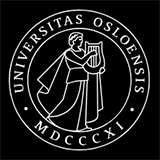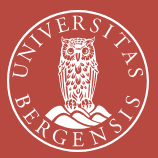The Norwegian Academy of Music (NMH) is Norway's largest institution of higher education in music, located in the capital, Oslo. Here are some key facts about the Norwegian Academy of Music:
Overview
Founded: 1973 (predecessor can be traced back to the Oslo Academy of Music in 1883)
Institutional nature: public
Main campus location:
Oslo, main campus
History
The history of the Norwegian Academy of Music can be traced back to the Oslo Academy of Music, which was founded in 1883.
In 1973, the Oslo Academy of Music merged with several other music schools to officially become the Norwegian Academy of Music.
In 2003, the school moved to a new modern campus and continued to grow and develop.
School Strength
NMH has about 750 students and about 200 faculty and staff.
Offers undergraduate, master's and doctoral programs covering a wide range of subject areas.
Enjoys an international reputation in the fields of classical music, jazz, Nordic traditional music, music education, etc.
The school is one of the largest concert organizers in Norway, holding about 300 concerts each year.
Educational philosophy
Emphasis on practical learning, encouraging students to develop skills through performances, recordings and actual projects.
Focus on interdisciplinary cooperation, especially between different majors.
Attach importance to international education, recruit international students, and provide courses taught in English.
Committed to cultivating musicians and teachers with high levels of artistic literacy and innovation.
Subject settings
Bachelor's degrees:
Classical music performance
Jazz performance
Nordic traditional music
Music education
Composition
Church music
Master's degrees:
Classical music performance
Jazz performance
Nordic traditional music
Music education
Composition
Church music
Music theory
Music therapy
And other related fields of master's programs
PhD programs:
Music performance
Composition
Music education
Musicology
And other related fields of doctoral programs
English-taught courses:
Most master's and doctoral programs are taught in English to attract international students.
Professional direction
Classical music performance: covers various instrumental performances (such as piano, violin, cello, etc.) and vocal music.
Jazz performance: including improvisation, arrangement and band cooperation.
Nordic traditional music: focus on the traditional music forms of Norway and other Nordic countries.
Music education: training future music teachers, focusing on teaching methods and practice.
Composition: covering modern composition technology, electronic music and multimedia works.
Church music: involving organ performance, choral conducting and religious music.
Music theory: studying music analysis, music history and music philosophy.
Music therapy: combining psychology and musicology, applied in clinical and educational fields.
Campus
Oslo campus:
Located in the center of Oslo, with convenient transportation.
The campus has modern teaching facilities, concert halls, rehearsal rooms, recording studios and libraries.
Mainly concentrated on most of the education and research activities.
International cooperation
NMH actively participates in international exchange programs and has established cooperative relations with many music colleges and universities around the world.
Provide exchange student programs to promote students' international vision and cultural exchanges.
As a member of the Association of European Conservatories (AEC) and other international organizations, NMH has an important position in international music education and research.
Fees
For EU/EEA students, NMH is usually free, but a small registration fee is required.
For non-EU/EEA international students, tuition fees vary depending on the major, generally between 6,000 and 14,000 euros per year. The specific fees should be consulted directly with the school or visit its official website for the latest information.
In terms of living costs, the cost of living in Oslo is relatively high, but you still need to consider the costs of accommodation, food and personal expenses.
Application requirements
Applicants usually need to have a high school diploma or equivalent.
For undergraduate and master's programs, you usually need to take an entrance exam or interview to demonstrate your musical talent and ability to pursue a related career.
The English proficiency requirement is usually B2 level (according to the Common European Framework of Reference for Languages CEFR), and some majors may require higher levels.
-

University of Oslo
-

OsloMet - Oslo Metropolitan University
-

University of South-Eastern Norway
-

Nord University
-

University of Inland Norway
-

Norwegian University of Life Sciences
-

University of Bergen
-

University of Stavanger
-

University of Agder
-

Norwegian University of Science and Technology
-

Mesoamerican University
-

Istmo University
-

Mariano Galvez University of Guatemala
-

Regional University of Guatemala
-

Galileo University
-

Francisco Marroquín University
-

Rafael Landívar University
-

University of the Valley of Guatemala
-

University of San Carlos of Guatemala
-

Technological Institute of Tlaxcala Plateau
-

Golfo University
-

Technological University of South Sonora
-

Technological University of Huejotzingo
-

Tizimín Institute of Technology
-

Chilpancingo Institute of Technology

